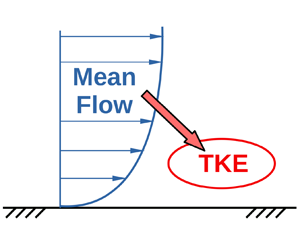Article contents
Universal scaling of mean skin friction in turbulent boundary layers and fully developed pipe and channel flows
Published online by Cambridge University Press: 16 June 2022
Abstract

A dynamically consistent scaling of mean skin friction in zero-pressure-gradient turbulent boundary layers and fully developed pipe and channel flows, is derived. Theoretical arguments are based on transfer of kinetic energy from mean flow to large eddies of turbulence. A single new velocity scale  $M/\nu$ is shown to be dynamically relevant for scaling skin friction in all flows;
$M/\nu$ is shown to be dynamically relevant for scaling skin friction in all flows;  $M$ is the planar kinematic momentum rate of the shear flow and
$M$ is the planar kinematic momentum rate of the shear flow and  $\nu$ is fluid kinematic viscosity. An asymptotic
$\nu$ is fluid kinematic viscosity. An asymptotic  $-1/2$ power scaling law (in
$-1/2$ power scaling law (in  $M$–
$M$– $\nu$ scaling) is shown to be universally applicable. It is observed that the semi-empirical finite-
$\nu$ scaling) is shown to be universally applicable. It is observed that the semi-empirical finite- $Re$ skin friction model, resulting from the asymptotic scaling law, applies well to individual flows, but fails to describe all flows in a universal fashion. This non-universality could be due to the differences in flow boundary conditions at finite Reynolds numbers and flow geometry, that affect the outer-layer structures in these flows. It is argued that these differences may be simply absorbed by considering differences in the shapes of mean velocity profiles amongst these flows. An empirical correction to
$Re$ skin friction model, resulting from the asymptotic scaling law, applies well to individual flows, but fails to describe all flows in a universal fashion. This non-universality could be due to the differences in flow boundary conditions at finite Reynolds numbers and flow geometry, that affect the outer-layer structures in these flows. It is argued that these differences may be simply absorbed by considering differences in the shapes of mean velocity profiles amongst these flows. An empirical correction to  $M$–
$M$– $\nu$ scaling is proposed based on Clauser's shape factor
$\nu$ scaling is proposed based on Clauser's shape factor  $G$. It is demonstrated that data from all flows in this new, semi-empirical
$G$. It is demonstrated that data from all flows in this new, semi-empirical  $M$–
$M$– $\nu$–
$\nu$– $G$ scaling collapse remarkably well onto a single universal curve. The corresponding universal finite-
$G$ scaling collapse remarkably well onto a single universal curve. The corresponding universal finite- $Re$ model in
$Re$ model in  $M$–
$M$– $\nu$–
$\nu$– $G$ scaling is shown to describe this curve to an excellent accuracy. These results underscore the importance of a dynamically consistent approach towards revealing universality of skin friction scaling in wall turbulence.
$G$ scaling is shown to describe this curve to an excellent accuracy. These results underscore the importance of a dynamically consistent approach towards revealing universality of skin friction scaling in wall turbulence.
JFM classification
- Type
- JFM Papers
- Information
- Copyright
- © The Author(s), 2022. Published by Cambridge University Press
References
REFERENCES
- 2
- Cited by





